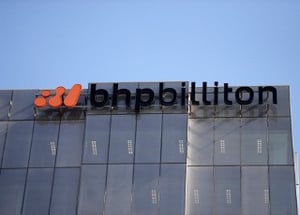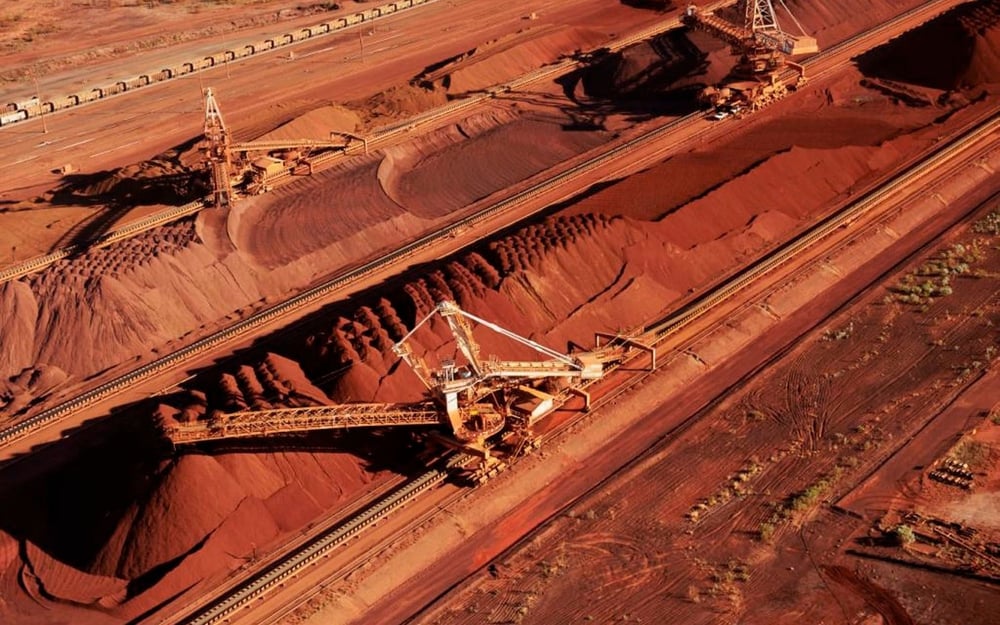Following on from my last note, the stock has been firm on the Australia Stock Exchange and has moved up on the JSE, largely due to rand weakness. At that time, BHP Billiton was at A$33,33 on the ASX (in line with the current price) and R287,87 on the JSE, compared with R320 currently, a rise of 11%. The stock has also been buoyed by anticipated return of cash in future.
“Cash Flush”
BHP Billiton [JSE:BIL]
Share price: AUD33,78 ASX, GBP16,69 LSE, ZAR319,80 JSE
Net shares in issue: 2,11 billion LSE and JSE
Net shares in issue: 3,21 billion ASX
BHP Billiton Limited and BHP Billiton PLC is a dual listed company; PLC has a secondary JSE listing
Market cap: R675,0 billion JSE
Fair value DCF: $22,50, A$30.82 on ASX, £15,23 on LSE (including a 12% discount) and R290 per share on the JSE at an exchange rate of ZAR19,00/£
Portfolio Buy
What you need to know:
I mentioned that BHP had a good end to the financial year, with iron ore demand remained buoyant of late. Iron ore is the single most important commodity, contributing 39% of EBITDA, followed by copper at 28%, coal at 19%, and petroleum at 14%, with other commodities the balance.
For the twelve months ended June 2018, operating cash flow after working capital was $18,5 billion whilst free cash flow after capex was $12,5 billion. EBITDA of $23.2 billion from continuing operations increased by 20% with the margin at 54%. Adjusted earnings came in at $9,6 billion, up 33%, with underlying EPS also up 33% to $1,68. The full year 2018 dividend is 118 US cents.
The balance sheet is sound. EBITDA interest cover is a healthy 19x and I estimate it will improve to 25x in F2019. With strong underlying cash flow, net debt reduced to $10,0 billion, which is a debt to equity ratio of 18% compared with over 40% in F2016. I forecast debt to equity to fall further in F2019 to 15%.

EBITDA will likely match $23 billion in F2019 with earnings at or around $9 billion.
The sale of US shale assets for $10,8 billion could be returned through either buy-backs or a cash dividend. On a buy-back split, that would mean $4,3 billion for the LSE/JSE share register. This I calculate to be at least 10% EPS accretive in 2019 and EPS accretive in the years thereafter, further strengthening the bull case relative to other JSE miners.
Mergers and acquisitions are not likely so growth will focus on current assets. There will be higher cash returns to shareholders even as the company keeps capital expenditure at $8 billion to finance growth, with copper allocated the largest slice, followed by iron ore, petroleum, and coal. BHP Billiton mines in Australia (iron ore, coal, petroleum), the United States (petroleum), Chile and Peru (copper), Brazil (iron ore), and Canada (potash). There is longer term potential in potash project but more so in copper and oil.
BHP has none of the South African risk you get in most other JSE listed miners and together with proven management and quality assets across a focused footprint makes it highly appealing for those seeking mining exposure.
Just a reminder that there are different registers, with 2,1 billion shares in issue on the LSE and the JSE and 3,2 billion shares in issue on the ASX. There is a combined 5,3 billion shares in issue, which should be used a per share denominator. The PLC register has 40% of the aggregate number of issued shares and the Ltd register holds 60% of the shares.
South African shareholders hold 17% of the PLC structure and 7% of the combined entity. In assessing the share price local investors should bear in mind that the LSE price is the most relevant with the rate of exchange influencing movement in the rand price on the JSE.

The discount of PLC to Ltd has remained constant at 12% for a long time. The Australian price is A$33,78 and the PLC price is £16,69, 12% below what it would notionally be at £18,91 at an exchange rate of AUD1,786/GBP£. The JSE share price of R320 is in line with the LSE price as an exchange rate of R19,00/£.
With currency movements of late I have edged my fair value down slightly to $22,50 per share, which is approximately A$31,00. Assuming a 12% LSE and JSE discount the value per share is £15,23 on the LSE and R290 per share on the JSE at an exchange rate of ZAR19,00/£. However, if I take a DCF and blend it with an EV/EBITDA measure, I could justify up to $25 per share which translates to A$34 or roughly R318 per share.
Assuming a forward dividend of $1,30 per share, the gross yield is 6%, which is reasonable for a miner of this quality. This of course does not include a special dividend or share buy-back impact. Price to book of 2x is also not expensive.
The key question for Easy Equities clients contemplating investing new money is the direction of the rand. Any strengthening would mean a retreat in rand, even if the real value has not changed in Australian dollar or pounds. The trick is rand cost averaging, take moments of rand strength to add a bit to your holding.
Wishing you profitable investing, until next time.
M N INGHAM

Make sure to check out Barry Dumas' analysis on
BHP Billiton here